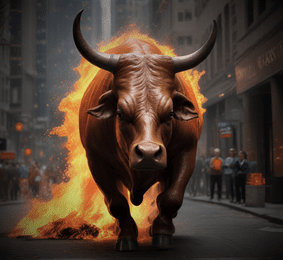In the world of financial markets, options trading is a popular method for investors and traders to hedge, speculate, and generate profits. Among the various types of options available, the call option is one of the most widely used. However, for those new to the concept, the mechanics behind buying a call option can seem complex. This article will break down what a call option is, how it works, and the strategies for using them effectively.
Explaining the Option Contract
In this article we will focus on “call options” meaning a trader expects the price of the stock to go up. Now, put options are the opposite and that will be covered in another article. At its core, a call option is a financial contract that grants the buyer the right, but not the obligation, to buy an underlying asset at a predetermined price, known as the strike price, within a specific time frame, referred to as the expiration date.
The underlying asset could be anything from stocks, bonds, commodities, to other securities. By purchasing an option, you are essentially betting that the price of the underlying asset will increase in value.
This is because you are locking in the right to buy the asset at a fixed price. If the asset’s market price rises above the strike price before the option expires, you can potentially profit from the difference. If the price doesn’t rise as expected, you may lose the premium paid for the option, but you are not obligated to buy the asset.
Key Terms
Before diving deeper into the mechanics, it’s essential to understand the key terms that come with option buying:
- Strike Price: The price at which the holder of the option can buy the underlying asset. This is determined at the time of purchase.
- Premium: The price you pay to purchase the call option. This is essentially the cost of the option and is non-refundable. It is determined by several factors, including the current price of the underlying asset, the strike price, time to expiration, and market volatility.
- Expiration Date: The date by which the option must be exercised or it becomes worthless. Options have a finite lifespan, and this date is critical in determining the option’s value.
- Underlying Asset: The asset on which the option is based, such as stocks, bonds, commodities, or ETFs.
- In-the-Money (ITM): A situation where the current price of the underlying asset is higher than the strike price of the call option. The option has intrinsic value.
- Out-of-the-Money (OTM): When the underlying asset’s current price is lower than the strike price, and the call option has no intrinsic value.
- At-the-Money (ATM): This occurs when the price of the underlying asset is exactly equal to the strike price of the call option.
How Do Options Work?
The mechanics of buying an option (long) or put (short) can be understood through a simple example:
Example: Imagine you believe that the stock of a company, XYZ Corp., is going to rise over the next three months. XYZ Corp.’s stock is currently trading at $50 per share. You decide to buy a call option with a strike price of $55 that expires in three months. The premium for this option is $3 per share.
- Premium Paid: The cost of the call option is $3 per share. Since options are typically sold in contracts that represent 100 shares, you would pay $300 for one contract ($3 premium × 100 shares).
- Strike Price: You have the right to buy XYZ Corp.’s stock at $55 per share, regardless of its market price within the next three months.
Now, let’s explore the possible scenarios that could unfold before the expiration date:

* As shown in the chart above the ES, SPY, and Call Option are shown. Entry points (green/red lines bottom right chart) are buy at .15 and sell at .75 – showing that trade is 5x times the money. So if $1,000 was invested and bought at .15 (66 contracts) then sold at .75 the trade would be worth $4,950 (minus .65 per contract = 42.90). The profit for this trade would be $3,907 after initial investment and trade fees. Not too shabby, eh?
Scenario 1: The Stock Price Rises
If the price of XYZ Corp.’s stock rises to $70 per share by the expiration date, your option would be considered “in-the-money.” You can exercise the option to buy the stock at the $55 strike price, which is $15 below the current market price. Your profit would be $15 per share, minus the premium you paid ($3 per share), resulting in a net profit of $12 per share.
If you bought one contract, your total profit would be $1,200 ($12 × 100 shares).
Scenario 2: The Stock Price Stays Below $55
If XYZ Corp.’s stock remains below $55, your option would expire worthless, and you would lose the premium paid for the option. In this case, your loss would be the entire premium of $300 ($3 per share × 100 shares). That is why setting a stop loss is best especially when trading 0tde options (zero-days-to-expiration).
Scenario 3: The Stock Price Reaches $55
If the stock reaches $55, which is the strike price, your call option would be considered “at-the-money.” In this case, you wouldn’t make any profit because the market price is the same as the strike price. Your loss would be limited to the premium paid ($300), but you would not gain any profit from exercising the option.
Factors That Influence An Options Pricing
The price of an option, also known as the option’s premium, is influenced by various factors. Some of the most important ones include:
Stock Price: The current price of the underlying asset is one of the most significant factors in determining the value of a call option. If the stock price is above the strike price, the call option will have intrinsic value.
Strike Price: The difference between the strike price and the market price of the underlying asset plays a crucial role. The more in-the-money an option is, the more expensive it tends to be.
Time to Expiration: The more time there is until the option expires, the more expensive the option is likely to be. This is because the longer the time frame, the greater the chance that the underlying asset’s price will move favorably.
Volatility: Market volatility, which refers to the fluctuations in the price of the underlying asset, can increase the value of a call/put option. Higher volatility increases the chances of the stock price moving significantly, thus raising the potential for profit.
Interest Rates: Changes in interest rates can also affect the pricing of options. Typically, higher interest rates can make call options more expensive, as they increase the cost of carrying the underlying asset.
Dividends: If the underlying asset pays dividends, this can affect the price. Generally, when a stock goes ex-dividend (the date after which shareholders are no longer entitled to the upcoming dividend), the price of the stock tends to drop, which can decrease the value of call options.
Advantages
There are several advantages making it an attractive strategy for certain investors:
Leverage: One of the primary benefits is the ability to control a large number of shares for a relatively small amount of capital. This leverage can result in significant profits if the underlying asset’s price rises substantially.
Limited Risk: The maximum loss is limited to the premium paid for the option. Even if the asset’s price moves unfavorably, the loss is capped at the cost of the premium, unlike owning the stock outright, where losses could be much larger.
Profit from Rising Prices: Call options allow investors to profit from an asset’s price increase without actually owning the underlying asset. This can be useful when speculating on stocks, commodities, or indices.
Hedging: Call options can also be used as part of a hedging strategy to protect against potential price increases in assets you may need to purchase in the future.
Risks
While call options offer substantial profit potential, they also come with certain risks:
Total Loss of Premium: If the price of the underlying asset does not move above the strike price by the expiration date, the option will expire worthless, and the investor loses the entire premium paid for the option.
Time Decay: As the expiration date approaches, the value of the call option can decline, especially if the price of the underlying asset remains stagnant. This is known as time decay, and it means that options lose value as time passes.
Market Risk: External factors, such as changes in market conditions, economic data, or company performance, can cause the price of the underlying asset to behave unpredictably, which may affect the option’s profitability.
Conclusion
Trading options provides investors with the opportunity to leverage their position and potentially profit from an increase in the price of an underlying asset. However, like any financial instrument, options come with risks that must be understood before committing capital. By carefully considering factors such as the underlying asset’s price movement, time to expiration, and market volatility, investors can make informed decisions when purchasing.
Buying a call (or put option) involves purchasing the right to buy an asset at a specific price within a certain time-frame. This strategy can be a powerful tool for speculators, but it requires knowledge and understanding to manage the risks effectively. Whether for hedging or speculating, day trading options or spreads can be an exciting aspect of trading in the financial markets.
> Recommended: brokerage for trading > tastytrade.com.
> Recommended: order flow heatmap > bookmap.com.


